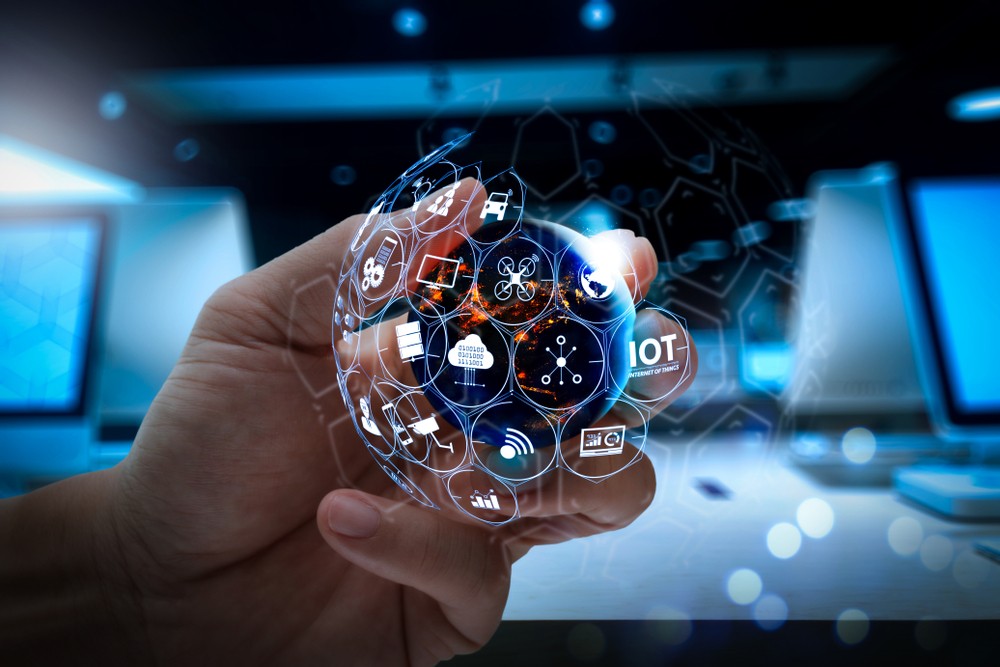In fact, “Fifty-seven percent of mobility decision makers said they have edge computing on their roadmap for the next 12 months,” according to a Forrester Analytics Global Business Technographics® Mobility Survey. That said, this is only the surface of what’s to come - here are my opinions and predictions on what will become mainstream throughout this year.
The growing landscape of the IoT
The global internet of things (IoT) market was valued at US$ 190.0 billion in 2018, and is projected to reach US$ 1,102.6 billion by 2026, according to research from Fortune Business Insights. As a result, organisations will be gathering data and insights from almost everything we use – not just from the moment we wake up but even while we sleep. Technologists say the birth of the iPhone led to the upsurge of edge computing and IoT. Considering the extent of Apple’s accomplishments, we will see a much wider variety of businesses making use of this capability to put reasonable amounts of compute into a tiny form factor and move it into dedicated functions.
As a result, in 2020, rather than revolutionary, expansion in the IoT space will be evolutionary. It will continue to progress, pushed forward by a requirement for more compelling, efficient, and cost-effective solutions, with edge computing at the forefront.
At the edge of the network
The majority of data is being created outside the four walls of the traditional data centre, which is unsurprising, as today’s world becomes more and more data-driven. As organisations get into the swing of 2020, they are beginning to closely analyse their cloud data storage. Cloud was originally perceived as the answer to all problems, but now the question is, at what cost?
More companies are looking at hybrid cloud and edge computing strategies in the hope of keeping data closer to its origin. This year, we’re expecting to see organisations more heavily relying on hybrid environments, and using edge computing to store, process, and minimise extensive quantities of data, which are then later transferred to a centralised data centre or the cloud.
Bigger and badder threats on the horizon
Over the past year, an onslaught of news headlines revealed that organisations from banks to airlines to hospitals, even entire local governments, fell prey to ransomware attacks. These menacing attacks are growing at a frightful pace, and will continue to become more sophisticated, more lucrative, and increasingly devious in 2020. Already this year has seen Travelex hitting the headlines as it fell victim to a ransomware attack. It is time for organisations of all sizes to think about what resources they need to modernise and protect their IT infrastructure.
As these threats continue into 2020, companies must understand that traditional legacy tools are leaving them exposed and vulnerable to tactical and well-organised criminals, as well as obstructing their digital transformation journey. Organisations should now be taking advantage of highly available solutions, such as hyperconverged infrastructure and edge computing, that allow them to not only keep up with changing consumer demands, but deploy the most effective cyber defences, disaster recovery, and backup.
Incase IT professionals are required to face the aftermath of data being corrupted, and with ransomware at the forefront of many organisations’ minds, a step-change is needed in the event of an attack. These organisations will increasingly be guided by insurance companies as they take more of an active role, not just in the recovery of data, but in deciding whether or not to pay the ransom demand. The total cost of doing business will also escalate in conjunction with the growing threat of cyber-attacks, and every company, no matter the size, should be preparing itself for the impact.
Reducing the footprint
Smaller computing form factors that perform enterprise-level tasks will be required to address the needs of both IoT and edge computing. The principal driving factor of this trend will be the cost of deploying and maintaining computing systems outside of the data centre. The smaller the form factor, the lower the requirements for power, cooling, and space.
Cloud computing is simply not suitable for many computing needs at the edge of the network where IoT is growing, even with 5G networks. Small computing devices and appliances that can run business-critical applications and be highly available will be critical to meeting the growing computing demands of this new decade.
With a much more discrete footprint than traditional servers and server-based appliances, smaller form factor computing will make technology more accessible outside of data centres. Many traditional systems can be replaced with smaller, cooler, and less power-hungry alternatives. A more compact footprint also aligns with the environmental initiatives of organisations around the world to reduce energy consumption into the coming years.
Edge computing, IoT and data protection will experience momentous gains in 2020, ensuring those who deploy these technologies get a great start to the decade. We also expect to see major changes in the way that organisations utilise these technologies and, further, how consumers respond to various innovations.




